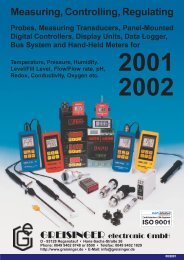1. Basic Concepts in Reliability Design - nl3prc
1. Basic Concepts in Reliability Design - nl3prc
1. Basic Concepts in Reliability Design - nl3prc
You also want an ePaper? Increase the reach of your titles
YUMPU automatically turns print PDFs into web optimized ePapers that Google loves.
[2] <strong>Design</strong><strong>in</strong>g for <strong>Reliability</strong>(5) OthersS<strong>in</strong>ce res<strong>in</strong> has a higher thermal resistance than metal, if thermal dissipation is <strong>in</strong>adequate, thechip temperature will <strong>in</strong>crease, degrad<strong>in</strong>g operat<strong>in</strong>g marg<strong>in</strong>s or materials and caus<strong>in</strong>g the deviceto fail. To prevent this, countermeasures such as <strong>in</strong>creas<strong>in</strong>g the thermal conductivity of the res<strong>in</strong>or attach<strong>in</strong>g heat s<strong>in</strong>ks are taken.However, various failures can still occur if the ambient temperature or power dissipation exceedsthe absolute maximum rat<strong>in</strong>g.Plastic-encapsulated devices can ignite at extremely high temperatures. This can occur withseveral of the failure mechanisms described above. Toshiba are now mak<strong>in</strong>g Flame-resistantres<strong>in</strong>s which conform to the current standard for res<strong>in</strong> non-flammability conta<strong>in</strong>ed <strong>in</strong> the U.S.Underwriter’s Lab Inc. (UL) Standard.2-41





